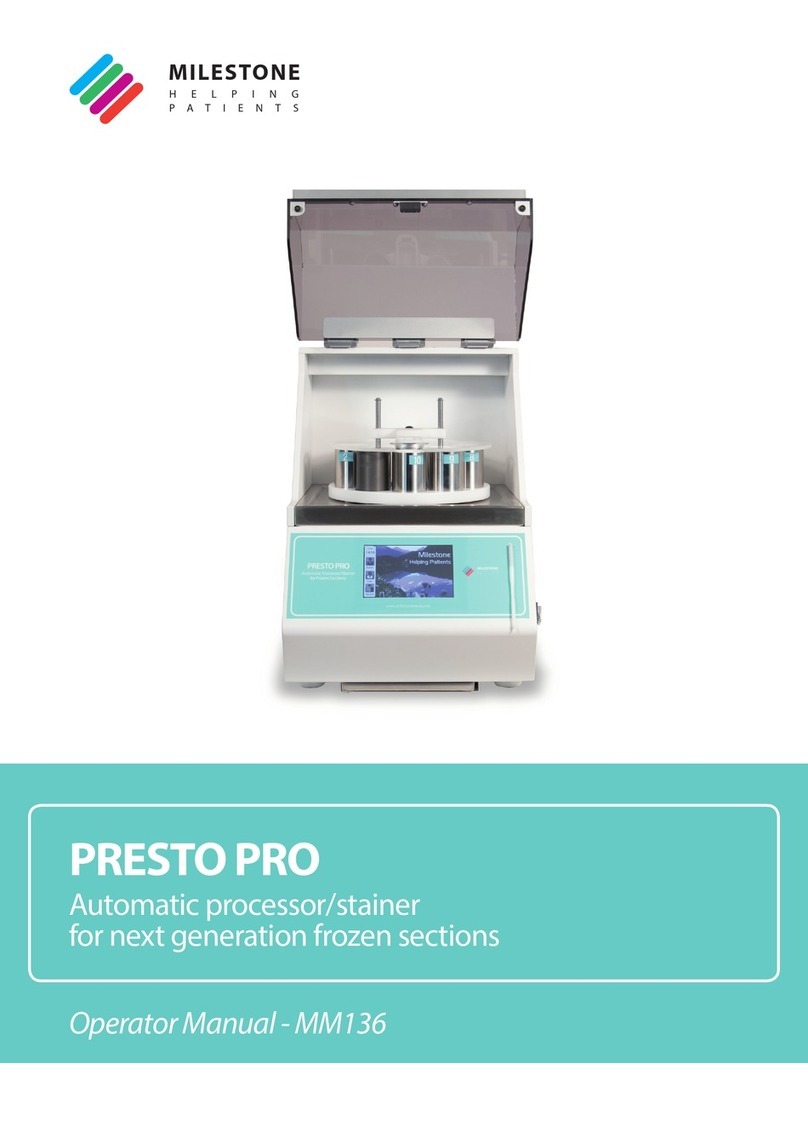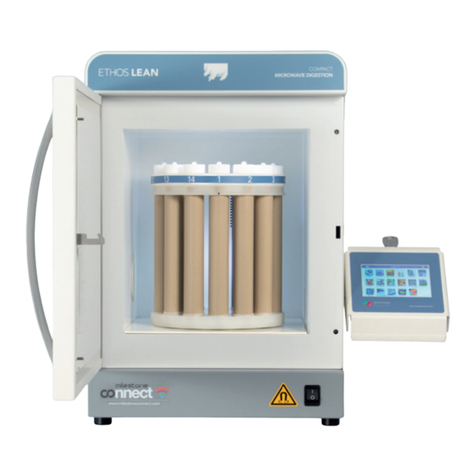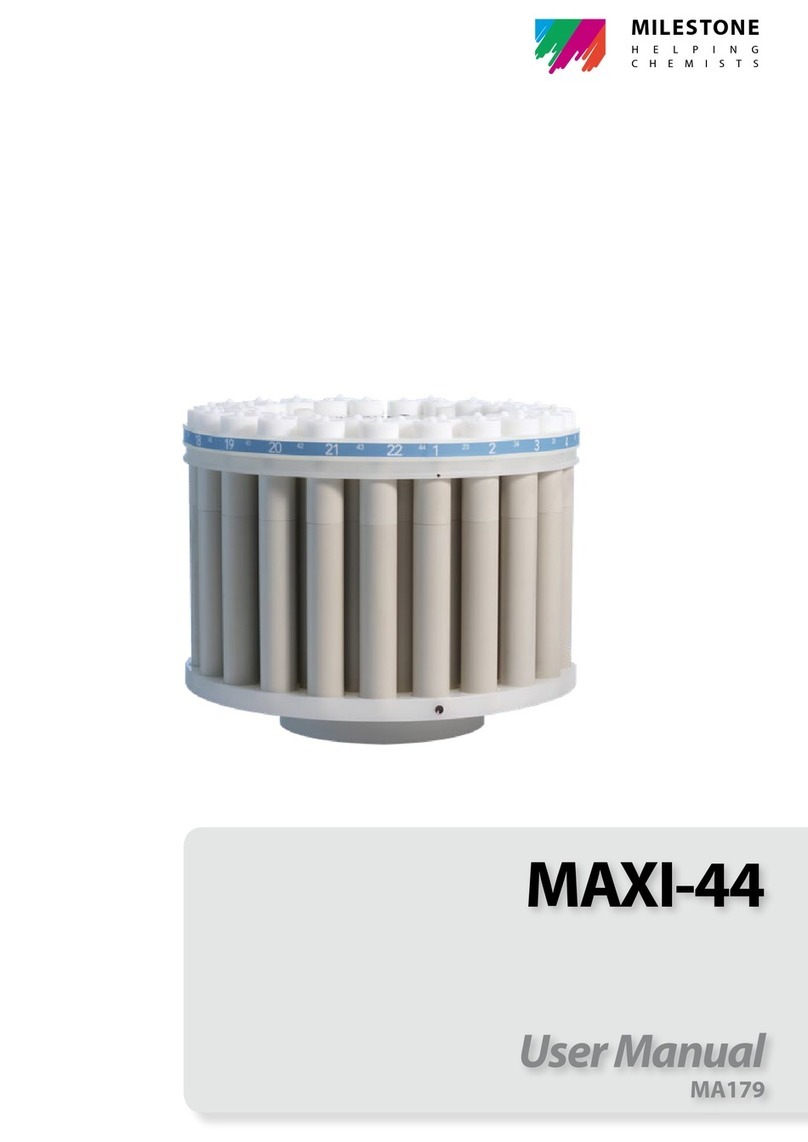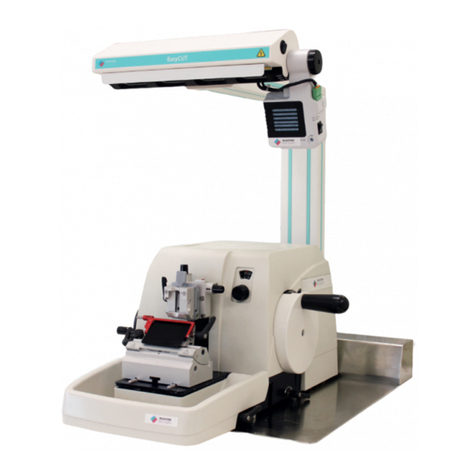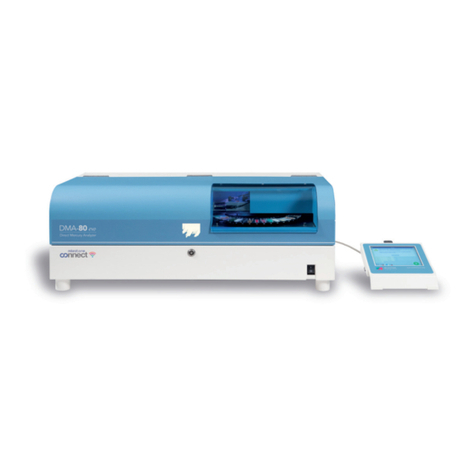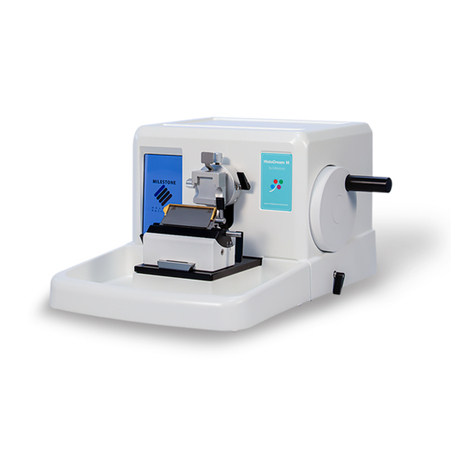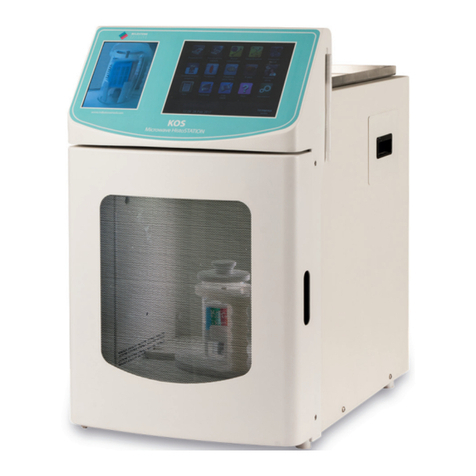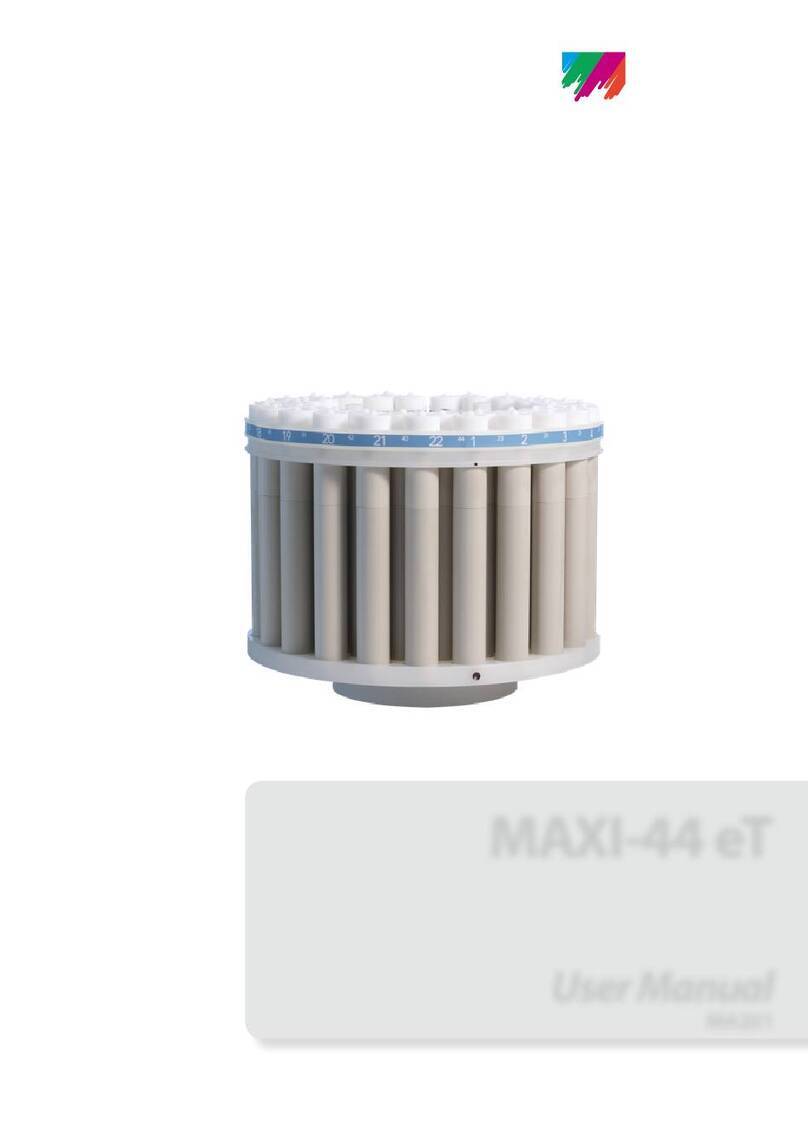Milestone Srl MA245-003 –ultraWAVE 3 –User Manual
3
Replacement of Parts ....................................................... 19
Other Hints...................................................................... 19
Safety of operation.................................................................................. 19
Pressure Parts ........................................................................................ 20
Observance of safety regulations.............................................................. 21
Placement and movement of the unit........................................................ 21
Definition of personnel skills and capabilities ............................................. 21
How to operate with the unit ............................................ 21
Operate according to Milestone Applications.............................................. 21
Synthesis of liquids.................................................................................. 21
Digestions with aggressive Chemicals e.g. acids, caustic solutions, etc......... 21
Do not use gas phase digestion applications.............................................. 22
Base load and gas loading pressure.......................................................... 22
Aggressive Media .................................................................................... 22
Pre-loading Pressure ............................................................................... 22
Spontaneous reactions ............................................................................ 22
Pressure line........................................................................................... 22
Care and Maintenance............................................................................. 23
4DESCRIPTION OF THE SYSTEM .....................24
Unpacking/Check-list........................................................ 24
Installation site ................................................................ 24
Technical Specifications.................................................... 24
Unit ....................................................................................................... 24
Pressure Vessel....................................................................................... 25
Cooling water ......................................................................................... 26
Instrument Sensors................................................................................. 26
Proximity sensors for lifting system........................................................... 26
General Information ................................................................................ 27
Microwave Heating.................................................................................. 27
Description of the ultraWAVE 3 ports and connections ....... 28
Front view .............................................................................................. 28
Operating elements and connections on the back panel ............................. 29
Exhaust system....................................................................................... 30
Emergency vent valve ............................................................................. 30
UltraWAVE 3 built in touch screen terminal........................ 31
Description ............................................................................................. 31
easyCONTROL ........................................................................................ 31
